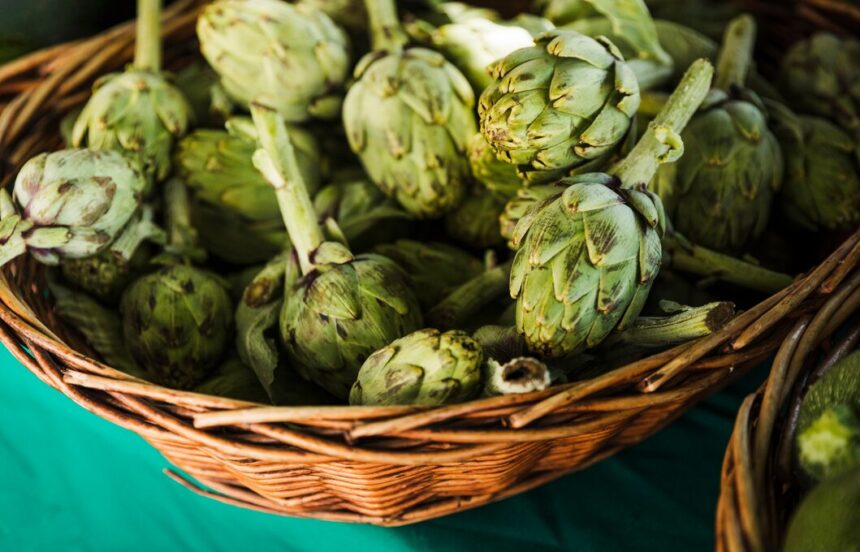Artichokes, known for their delicious hearts and unique flavor, are a valuable crop in South Africa, particularly in regions with suitable climates like the Western Cape. Cultivating artichokes successfully requires attention to detail and specific techniques to maximize both quality and yield. Here, we explore several strategies that farmers in South Africa can employ to enhance their artichoke production.
1. Variety Selection:
Choosing the right variety of artichoke is crucial for successful cultivation. Varieties suited to South Africa’s climate and soil conditions, such as Green Globe or Imperial Star, should be selected. These varieties are known for their adaptability and high yields in similar Mediterranean climates.
2. Soil Preparation and Fertility:
Artichokes thrive in well-drained, fertile soil. Before planting, ensure the soil is rich in organic matter and nutrients. Incorporating compost or well-rotted manure helps improve soil structure and fertility, promoting robust plant growth and higher yields.
3. Planting and Spacing:
Artichokes are typically propagated from suckers or seeds. Plant suckers in prepared soil during the cooler months, ensuring each plant has sufficient space (about 1.2 to 1.5 meters apart) to spread its roots and grow without competition. Proper spacing allows for optimal sunlight exposure and airflow, reducing the risk of disease.
4. Irrigation Management:
Maintaining adequate soil moisture is essential for artichoke growth. In South Africa, where water availability can vary, employing drip irrigation systems is highly efficient. These systems deliver water directly to the plant roots, minimizing water wastage and ensuring consistent moisture levels, which is critical during the establishment phase and flowering.
5. Nutrient Management:
Artichokes have specific nutrient requirements, particularly for nitrogen and potassium. Regular soil testing helps determine nutrient deficiencies, allowing farmers to apply appropriate fertilizers. Nitrogen should be applied in split doses throughout the growing season, while potassium supports healthy root development and flower production.
6. Weed and Pest Control:
Weed competition can significantly reduce artichoke yields. Implementing mulching strategies and regular cultivation can help suppress weeds. Additionally, monitoring for pests such as aphids and snails is crucial. Integrated pest management (IPM) techniques, including biological controls and selective pesticides, should be employed to minimize damage without harming beneficial insects.
7. Harvesting and Post-Harvest Handling:
Artichokes are harvested when buds are firm and compact, typically before the scales begin to open. Harvesting should be done in the cool hours of the day to preserve quality. Post-harvest handling involves immediate cooling and storage at temperatures around 0-2°C to maintain freshness and prolong shelf life.
8. Crop Rotation and Disease Management:
To prevent soil-borne diseases and maintain soil health, practice crop rotation with unrelated crops. This practice reduces disease buildup and improves overall soil fertility. Additionally, promptly remove and destroy any diseased plant material to prevent spread.
9. Training and Pruning:
Regular pruning helps manage plant size and encourages lateral bud development, leading to increased yields of uniform-sized buds. Removing spent flowers and dead leaves also reduces disease incidence and improves overall plant vigor.
10. Continuous Learning and Adaptation:
Lastly, successful artichoke cultivation requires ongoing learning and adaptation to local conditions and changing climates. Staying informed about new techniques, varieties, and market demands ensures sustainable production and profitability.
In conclusion, mastering the cultivation of artichokes in South Africa involves a combination of meticulous planning, proper management of resources, and attention to detail throughout the growing season. By implementing these techniques, farmers can enhance both the quality and yield of their artichoke crops, contributing to a thriving agricultural sector and meeting consumer demand for this unique and nutritious vegetable.
Join 'Farmers Mag' WhatsApp Channel
Get the latest Farming news and tips delivered straight to your WhatsApp
CLICK HERE TO JOIN






